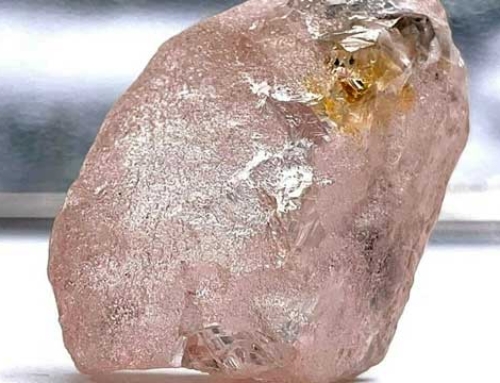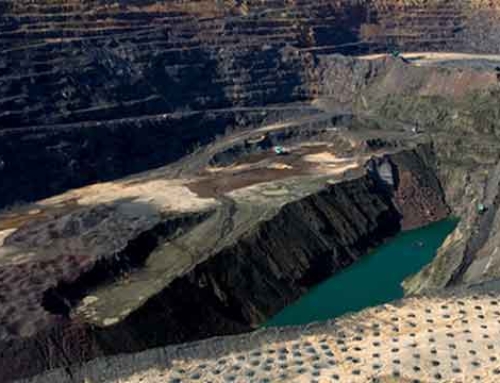Some large diamond producers (miners) have been trying to conquer manufacturing and retail, but will independent businesses pay the price?
De Beers has been dabbling in the retail end of the diamond industry for more than 15 years, but recently, other miners have begun to follow suit, breaking out of the production box and entering other aspects of the trade.
“The move into retail was a natural step for De Beers“, says David Johnson, the company’s head of strategic communications.
Initially, De Beers undertook category marketing for the entire industry, which required the business to be active in other parts of the diamond pipeline. When circumstances changed, the company chose to invest that money in building its jewelry brand so as to continue promoting diamond demand.
While the retail business is only a small part of the group’s overall finances, it is no less important. It provides not only revenue, “but also insight on trends and opportunities downstream, as well as other key strategic benefits, such as driving demand for the products we mine,” Johnson notes.
Plans in store
Other miners are progressively seeing the benefits of diversifying. Alrosa has already segued into cutting and polishing its own colored diamonds, which it offers for sale directly to consumers, and is mulling over the possible purchase of diamond manufacturer Kristall. The Russian miner is also working on a number of projects aimed at the end consumer to make buying natural diamonds more appealing, says Dmitry Amelkin, head of strategic projects and analytics for Alrosa.
Rio Tinto is likewise looking beyond a purely mining-driven business. Senco Jewels — an India-based chain of franchise stores — partners the Australia-based diamond producer with many of India’s top jewelers. The venture offers retail customers “access to Australian diamond jewelry collections by sourcing from the jewelry manufacturers who are authorized suppliers under Rio Tinto’s Australian Diamonds program in India,” according to Robyn Ellison, communications manager for Rio Tinto. All the diamonds in the jewelry products at the Senco stores will be sourced from the miner’s Argyle asset.
‘One has to consider the risks’
These moves are not altogether unexpected for some of the large mining companies, says Kieron Hodgson, an analyst with London-based investment bank Panmure Gordon.
“The larger players have clearly identified additional revenue Stephen Wetherall, CEO of Australia-based miner Lucapa Diamond Company, agrees with Hodgson’s assessment, but believes not every company that can move into manufacturing or retail avenues should. While his own company recently expressed interest in other aspects of the trade, he notes that “one has to consider the risks and barriers to entry that you will face, the likelihood of success, and if the returns you expect to garner for your stakeholders from deploying a downstream strategy will be worth making the step.” Lucapa plans to move into the midstream next year with cutting and polishing. One of the reasons behind this choice, says Wetherall, is the hope of mitigating risk at that level. “In the past, the industry was somewhat opaque and had a number of layers where margins were taken, but no actual value was added by those layers. Margins were merely made by those middlemen who really took no risk. Today, with the much-improved transparency in the trade, and relationship development between the miner and the manufacturing market, these middle layers can be circumvented, and that value gained by both the mine and the retailer.” The bottom line, he says, is that “for no material additional risk, we can increase revenues.” Cutting into the market? “Personally, I am not sure mining companies will want to ‘own’ the mid-market segment,” says Hodgson. As that segment requires specialized skills and the ability to process returned goods, he notes, “my view would be for more joint ventures/partnerships in the medium term.” Wetherall backs up this sentiment. While Lucapa is not currently interested in moving into retail, that may change down the line, he suggests. If the right opportunity arises, the company would be open to working together with retailers. “We do not believe venturing into the retail pillar on our own is in our strategic future,” he says. “That side of the diamond value chain is best left to those that know it best — the retail experts, who themselves make considerable investments in their brands and retail outlets.” Nonetheless, he continues, “consumer demands are changing, and the industry needs to adapt to meet those changing demands. Today’s consumer is showing interest in knowing where the diamonds they buy were sourced, polished and set in jewelry (and by whom). If, in working with a strategic partner, we can offer that certainty and comfort to their retail customer, then it may be a natural progression.” The downstream viewpoint “[While it’s possible] it may hurt some small businesses, it will facilitate growth in others,” says Stanley Zale, vice president of diamond and gemstone procurement for US-based manufacturer Stuller. He points out that the longtime presence of De Beers in the space hasn’t taken away from existing businesses. “What about the trend to shop local?” he asks. “It will be difficult for a multinational company to offer the same service as a jeweler who is a member of a community. Never say never, but let’s not discount the expertise and value that the independent jeweler provides to its customers.” Harris Botnick, the owner of Worthmore Jewelers in Georgia, sees the potential drawbacks, but doesn’t believe the miners’ expansion will ultimately change industry dynamics. “No doubt, more competition muddles up the market,” he says, and independent jewelers must “continually work to reinvent themselves and grow so we can be the ones to deliver the final piece of jewelry to the end user.” However, he points out that the day-to-day details of running a downstream businesses — such as selling one item at a time and dealing with warranty issues — may be difficult for miners to adjust to. And while some consumers might be swayed by the cheaper prices and easy traceability the miners can offer in the retail space, Botnick believes others will still rely on independent jewelers when it comes to purchasing quality pieces. “We are selling memories, special occasions and love,” he says. “That part of the equation cannot be achieved [by miners] at this time.”
But while the move toward a “side business” may prove beneficial to big mining companies, what effect will it have on the smaller companies that rely on the mid- and downstream part of the trade for their entire livelihood? Will miners — which can likely offer consumers cheaper goods with fully-disclosed provenance by cutting out middlemen — push existing manufacturers and retailers into a smaller corner of the market?
For their part, manufacturers and retailers don’t seem overly worried about the potential encroachment on their territory by miners.







